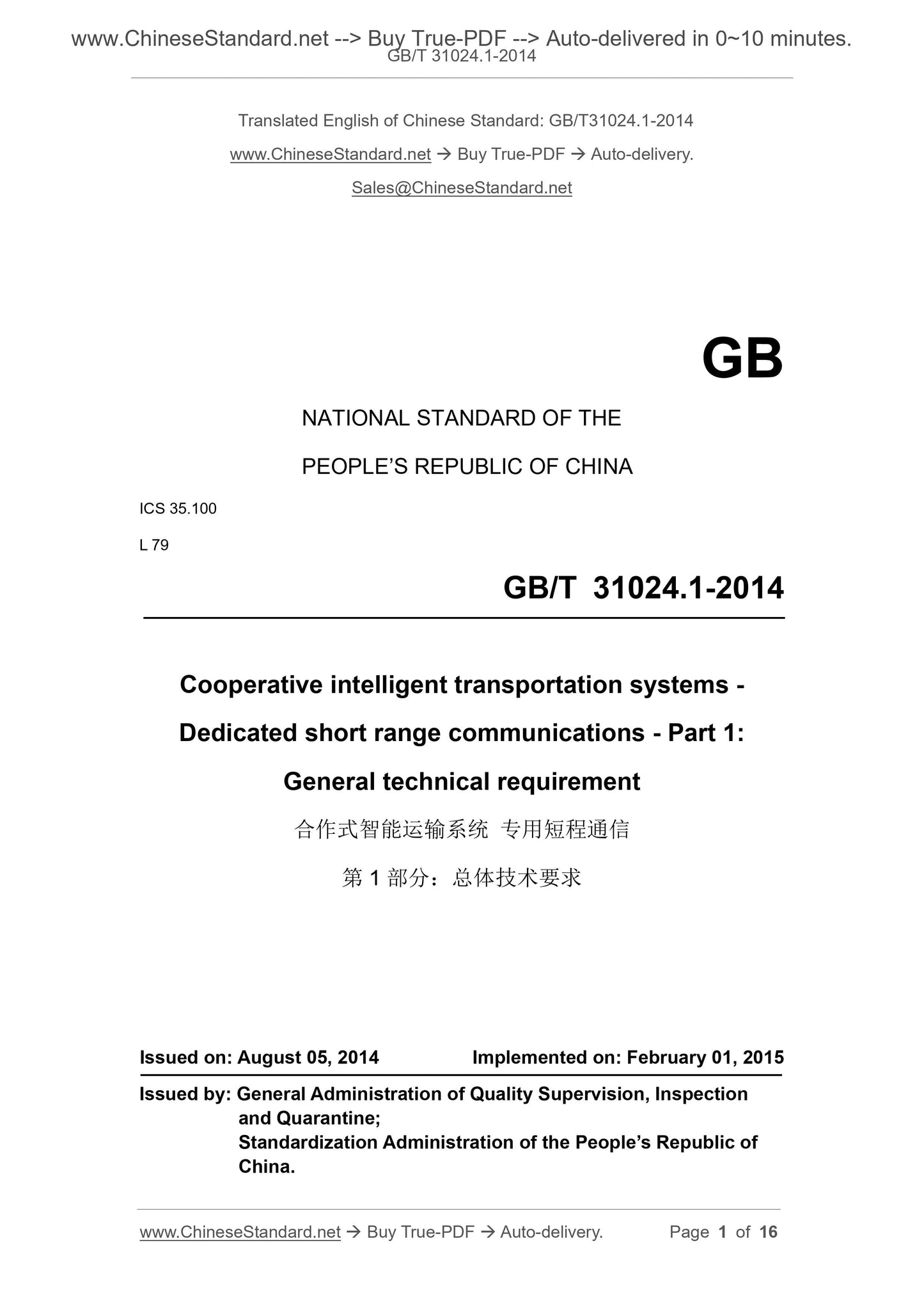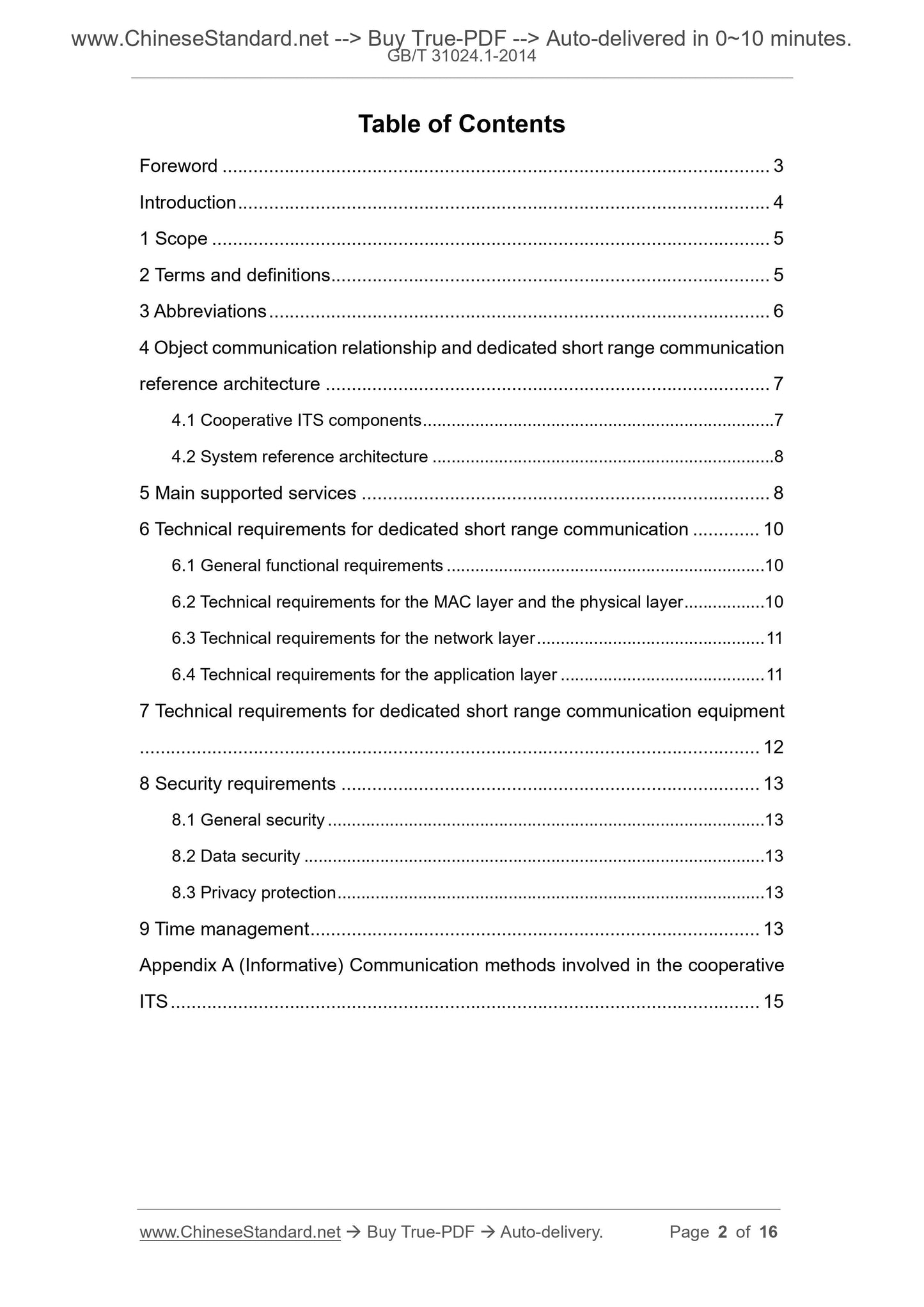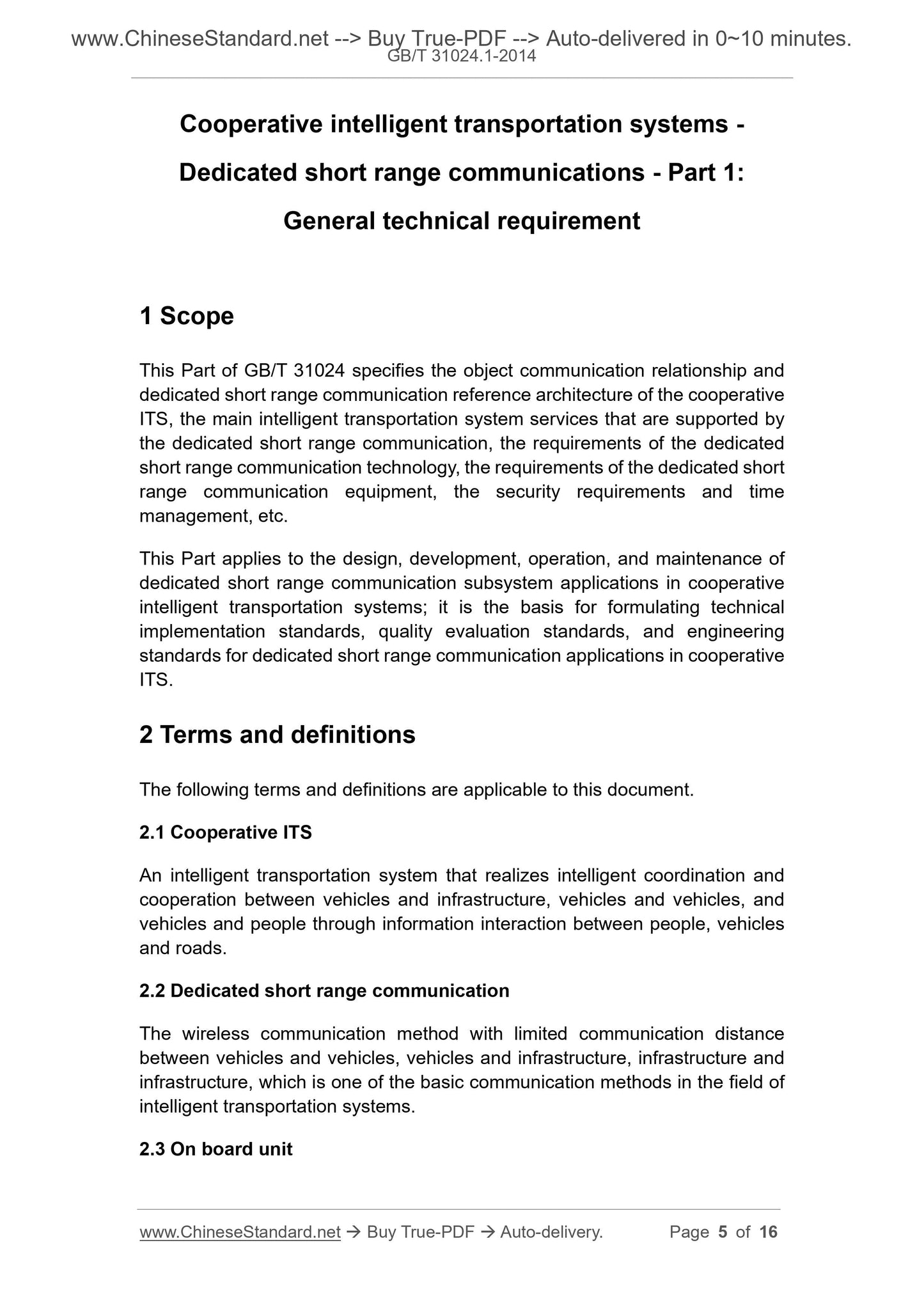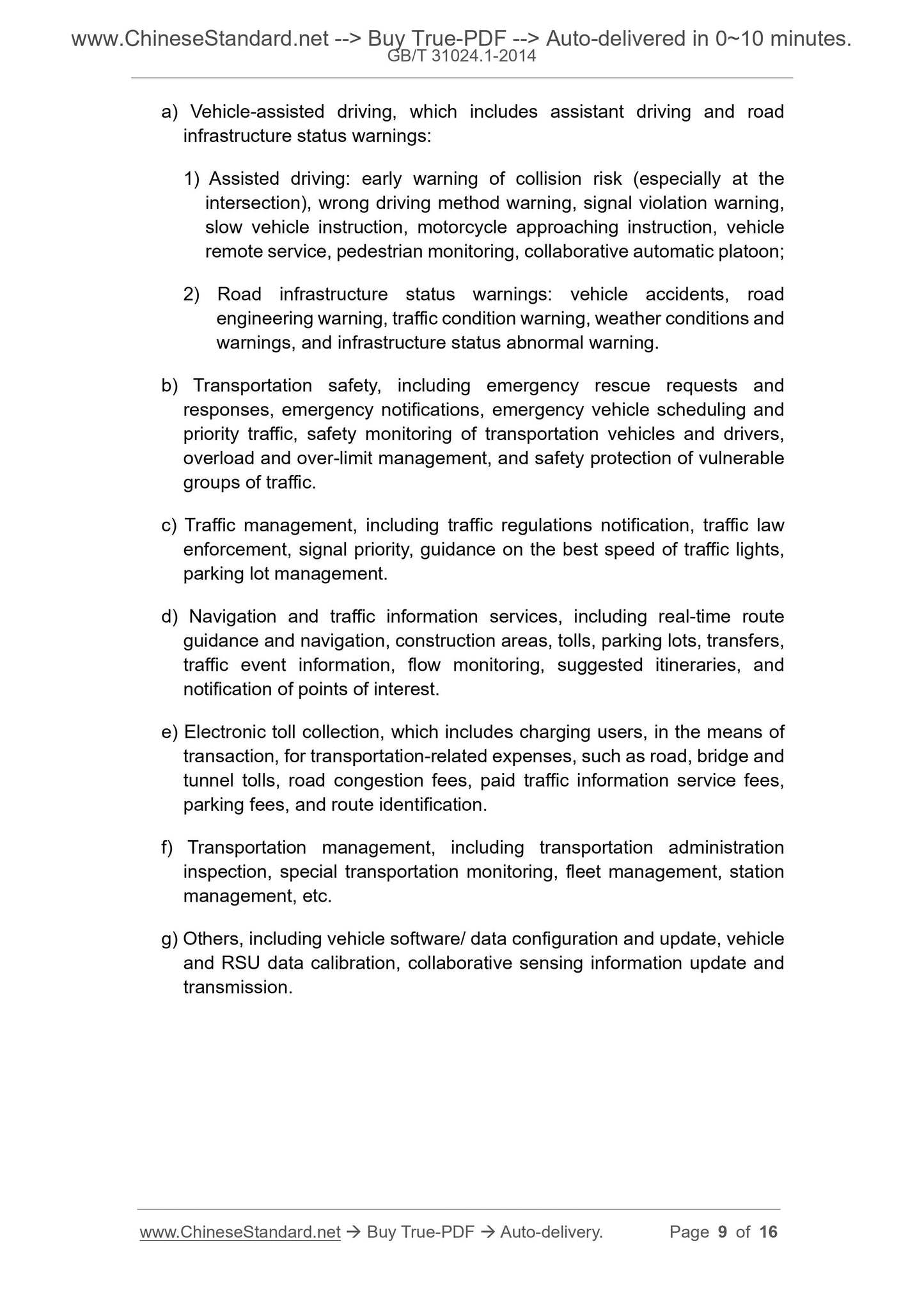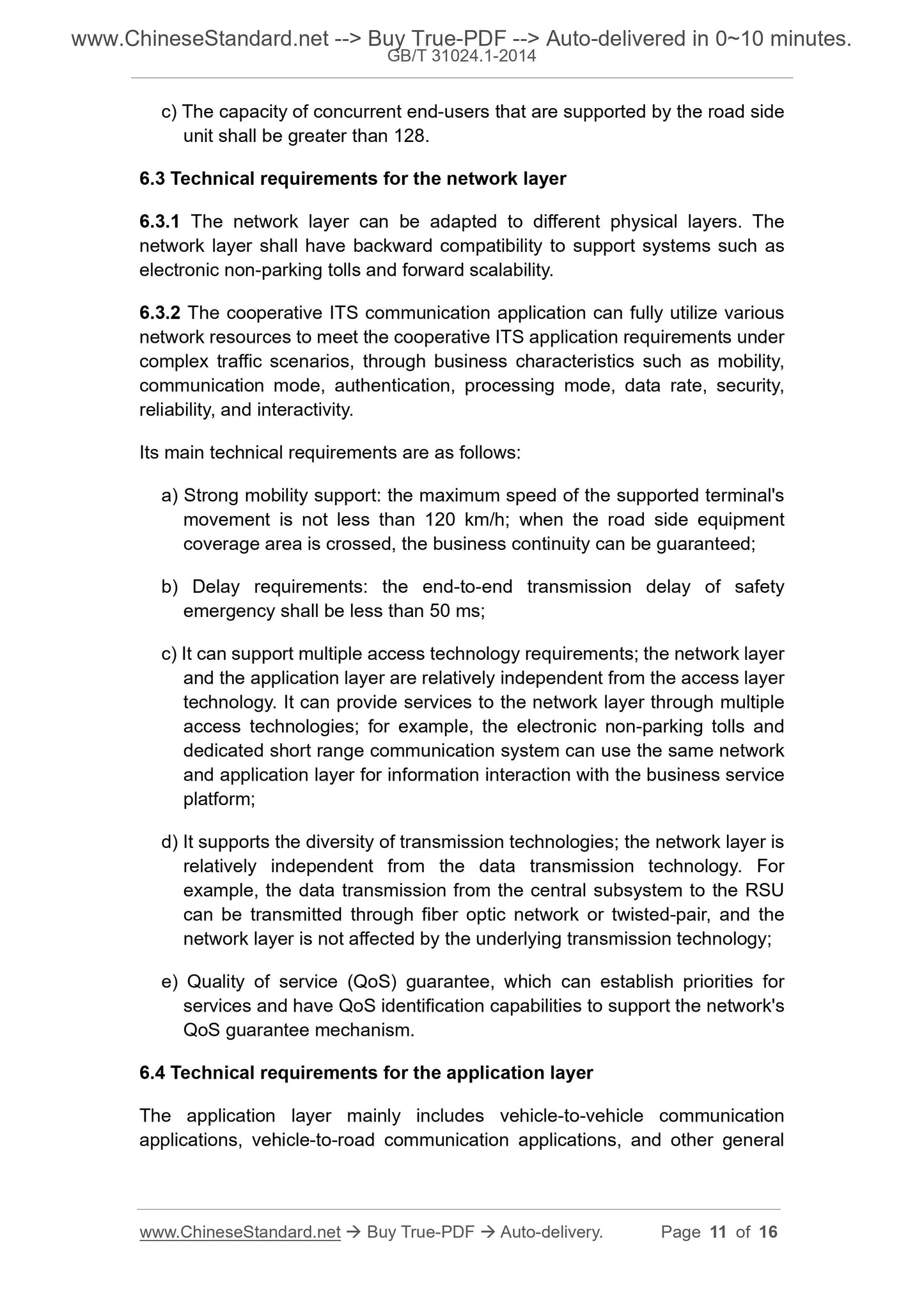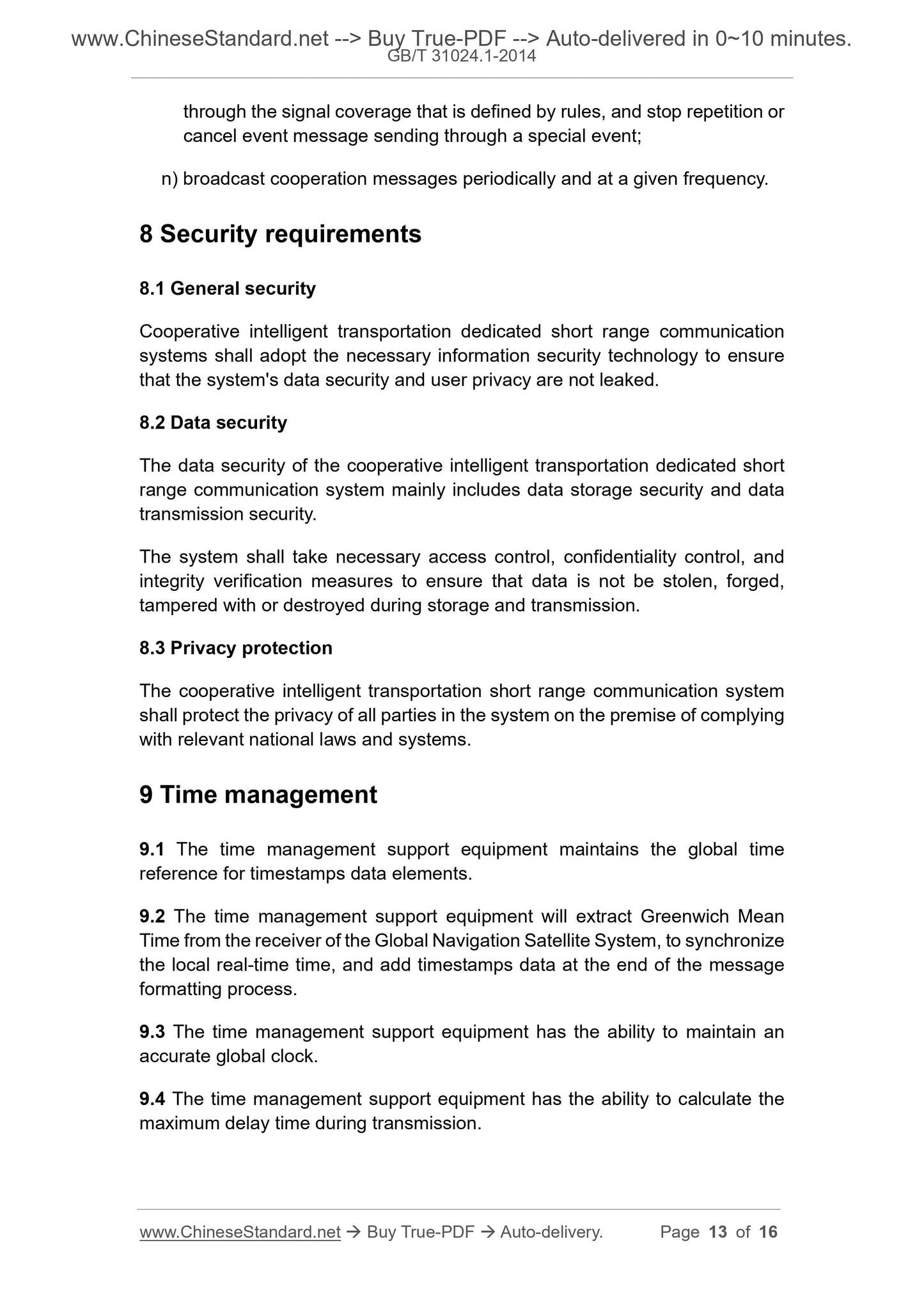1
/
of
6
www.ChineseStandard.us -- Field Test Asia Pte. Ltd.
GB/T 31024.1-2014 English PDF (GB/T31024.1-2014)
GB/T 31024.1-2014 English PDF (GB/T31024.1-2014)
Regular price
$145.00
Regular price
Sale price
$145.00
Unit price
/
per
Shipping calculated at checkout.
Couldn't load pickup availability
GB/T 31024.1-2014: Cooperative intelligent transportation systems - Dedicated short range communications - Part 1: General technical requirement
Delivery: 9 seconds. Download (and Email) true-PDF + Invoice.Get Quotation: Click GB/T 31024.1-2014 (Self-service in 1-minute)
Newer / historical versions: GB/T 31024.1-2014
Preview True-PDF
Scope
This Part of GB/T 31024 specifies the object communication relationship anddedicated short range communication reference architecture of the cooperative
ITS, the main intelligent transportation system services that are supported by
the dedicated short range communication, the requirements of the dedicated
short range communication technology, the requirements of the dedicated short
range communication equipment, the security requirements and time
management, etc.
This Part applies to the design, development, operation, and maintenance of
dedicated short range communication subsystem applications in cooperative
intelligent transportation systems; it is the basis for formulating technical
implementation standards, quality evaluation standards, and engineering
standards for dedicated short range communication applications in cooperative
ITS.
Basic Data
| Standard ID | GB/T 31024.1-2014 (GB/T31024.1-2014) |
| Description (Translated English) | Cooperative intelligent transportation systems - Dedicated short range communications - Part 1: General technical requirement |
| Sector / Industry | National Standard (Recommended) |
| Classification of Chinese Standard | L79 |
| Classification of International Standard | 35.100 |
| Word Count Estimation | 11,110 |
| Date of Issue | 8/5/2014 |
| Date of Implementation | 2/1/2015 |
| Regulation (derived from) | National Standards Bulletin No. 20 of 2014 |
| Issuing agency(ies) | General Administration of Quality Supervision, Inspection and Quarantine of the People's Republic of China, Standardization Administration of the People's Republic of China |
| Summary | This standard specifies the cooperative intelligent transport system objects communication relationship and dedicated short range communication reference architecture requires dedicated short range communications support primarily intelligent transportati |
Share
